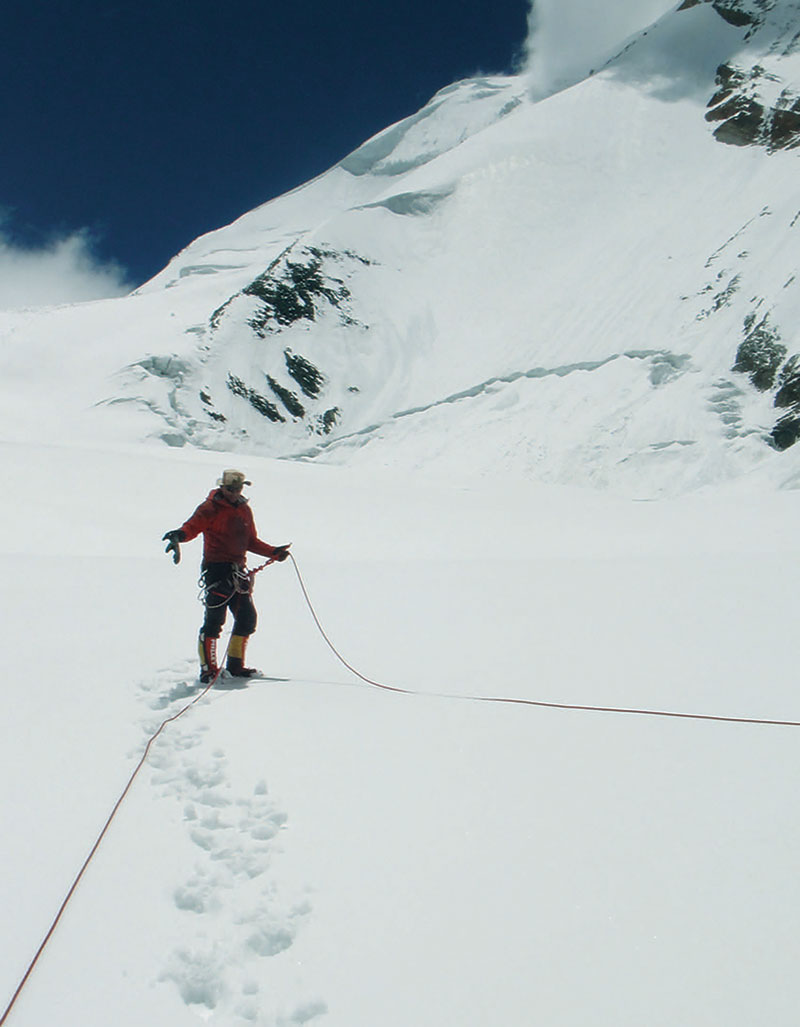11-member ITBP team undertakes a daunting mission at 21,000 feet to rescue the dead mountaineers
Yunus Dar
In what the Indo-Tibetan Border Police (ITBP) described as the world’s toughest rescue mission of its kind, the bodies of seven foreign tourists, including an Indian guide, were retrieved from a height of 21,000 feet by the force. Braving an inhospitable weather, with dearth of oxygen in the air, and a steep slope, 11 members of the ITBP successfully got down the bodies of the tourists who were swept away by an avalanche on the Nanda Devi peak in Uttarakhand.

The foreign mountaineering team included British nationals Martin Moran, John McLaren, Rupert Whewell and University of York lecturer Richard Payne; US nationals Anthony Sudekum and Ronald Beimel, Australian Ruth McCance and Indian guide Chetan Pandey. The eighth climber, British team leader Martin Moran, is still missing, the ITBP claimed.
The mountaineers had last communicated on 26 May 2019. The team initially comprised 12 climbers at the start of the expedition. Four British climbers were rescued after they broke away from the group at the start. The bodies of the climbers were spotted by a military helicopter on June 3, post which several attempts to extract the bodies proved unsuccessful because of the tough terrain and rough weather.
That’s when the ITBP was assigned the task to get the bodies down using its team of experienced and highly motivated mountaineers. The force considered it a mission for itself. Eleven volunteers were chosen to undertake the rescue mission. It was decided to send one team on foot to the accident site, take out the bodies and get it up to 15,000 feet, where an Indian Air Force (IAF) helicopter could take them down.
The ITBP rehearsed with the IAF for the mission named ‘Operation Daredevil’. There was no helipad at the accident site, so the helicopter had to be in the air at about half a foot from the ground. The team was trained for the exercise. After the operation was launched on June 14, the Pithoragarh district administration requested the IAF to send a small helicopter, Cheetah. Thereafter, the ITBP visited that area and surveyed the entire area.
The team leader for the mission, Ratan Singh Sonal, said in his 18 years of career, this rescue mission was the toughest he had ever encountered. Getting the bodies down from that sort of a height was a daunting task. “The bodies had sunken deep into the snow, but the light materials remained at the surface of snow and that’s how we were able to trace where their bodies had been. We had to shift the bodies from 17,000 feet to 18,900 feet and then to about 15,000 feet,” said Sonal. The biggest challenge was maintaining the logistics supply line.
“Cheetah helicopter was undergoing too much turbulence because of an inhospitable environment at that height, it was working at its upper limit. The pilot said if he continues flying the helicopter there’s a chance of crash,” he added.
“We named this the ‘Operation Daredevil’ as this represented a test of human limitation. Provision of supply and logistics, lack of suitable land sites, requirement of mountaineering equipment and skill, time factor, besides other factors made this the world’s toughest rescue operation. It was a perfect teamwork by our team,” said an ITBP official.
“There were many challenges while executing this operation. Firstly, we had to raise the bodies to a height of 200 metres towards the ridge and weather conditions were too adverse. So, we had a very limited time as working on this altitude after 11 am would have been almost impossible considering the wind speed and the heavy snowfall. Therefore, we pulled the bodies out using C-pulley to raise them up and transfer to the other side of the mountain, lifting the bodies one by one,” the official added.
“It took us two days to execute the operation. The operation was executed on first day, 1 June 2019, from 5 am in the morning, for 11 hours. On the second day, the operation was continued for about 12 hours. Three IAF helicopters were used for Operation Daredevil,” he said.
You must be logged in to view this content.

